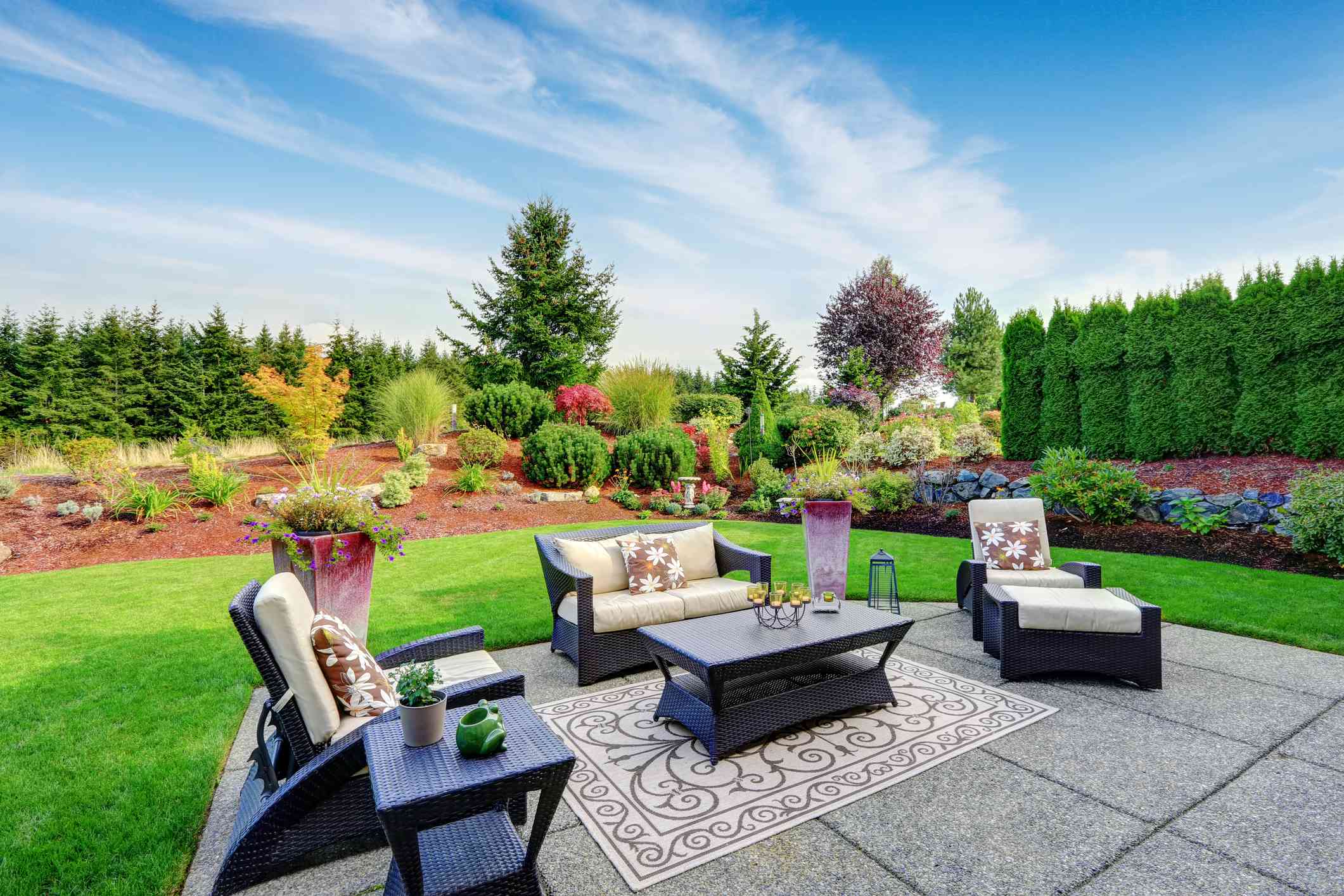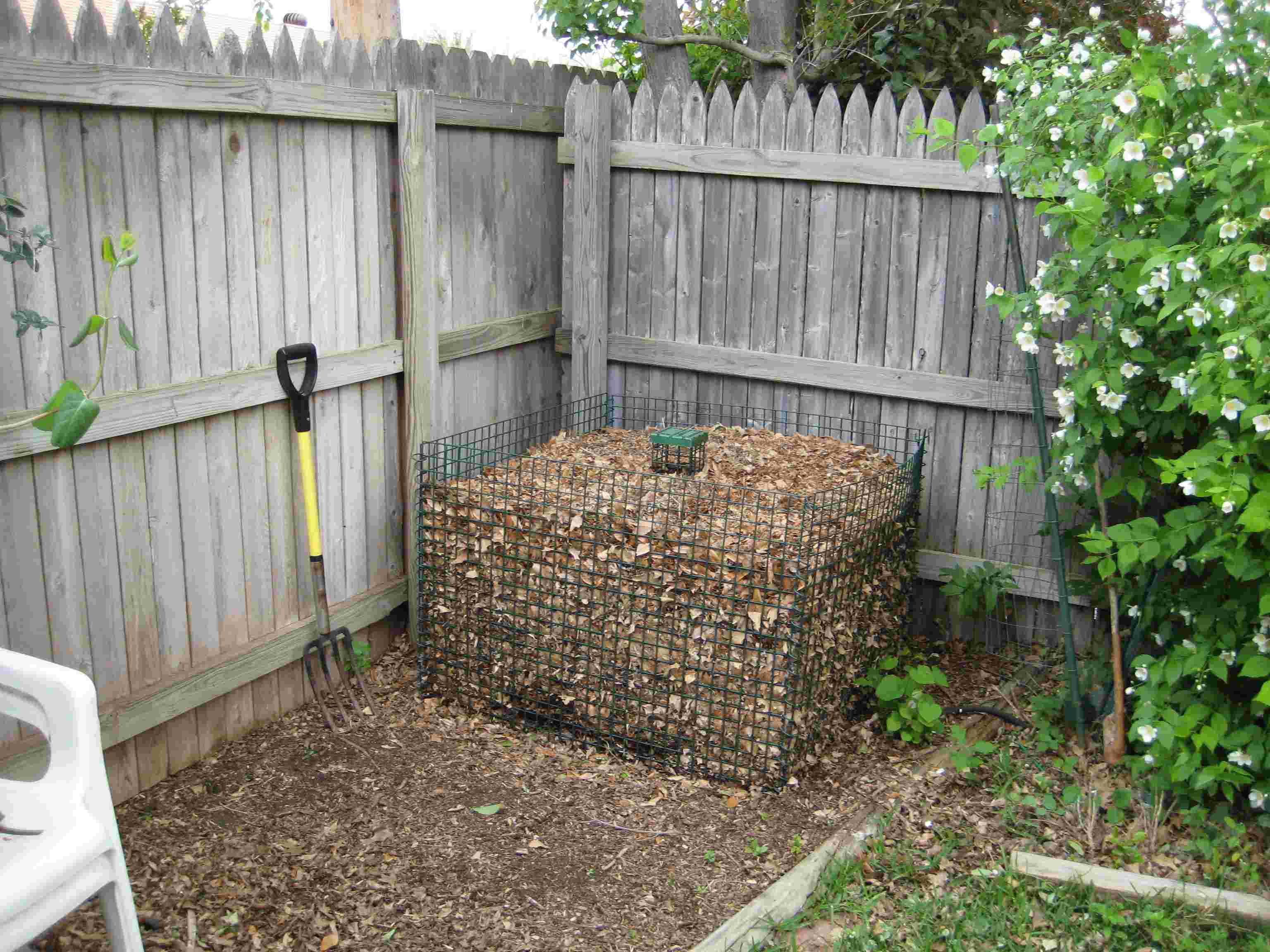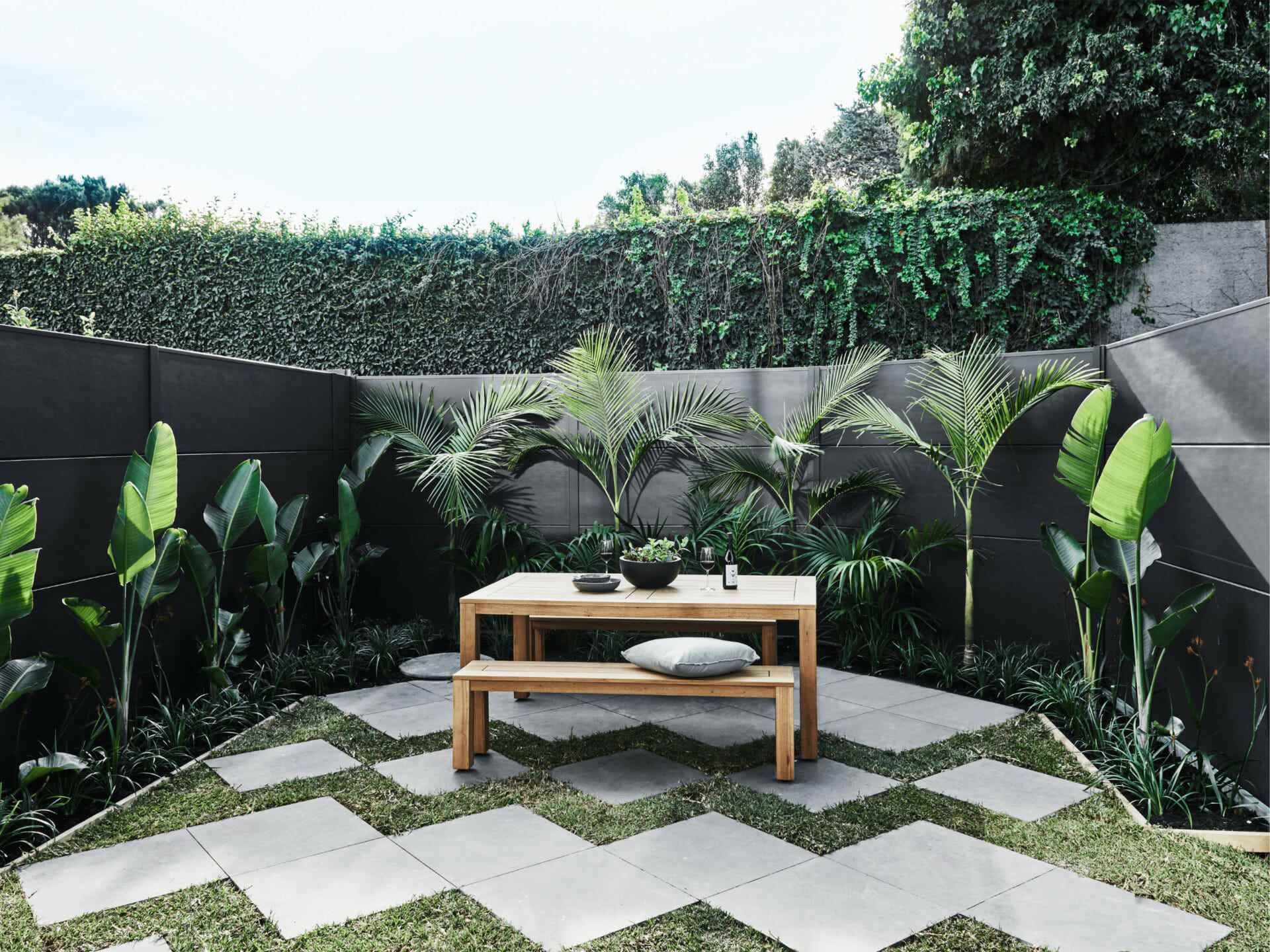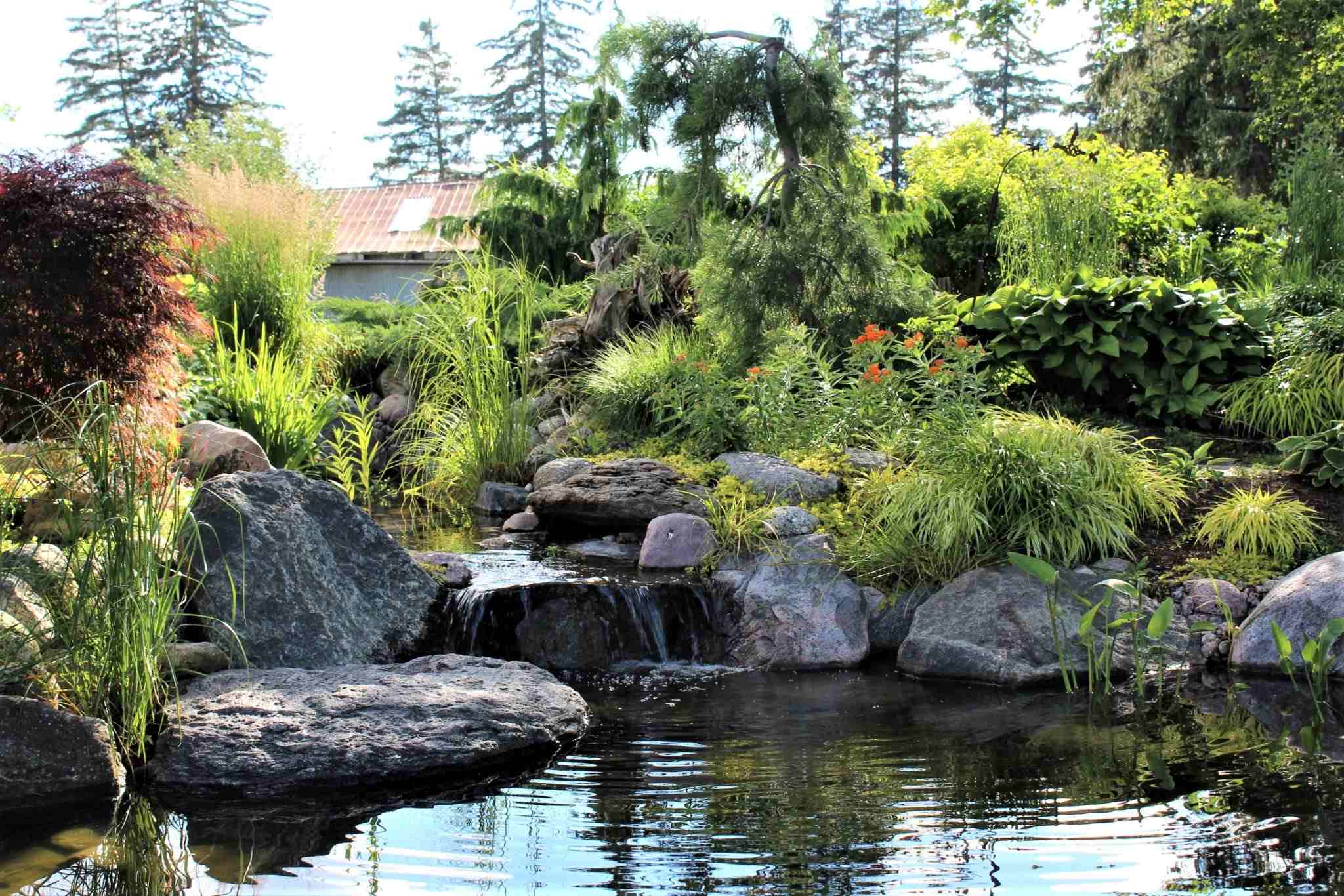Home>Gardening Techniques>DIY Projects>How To Make A Zen Garden In Your Backyard
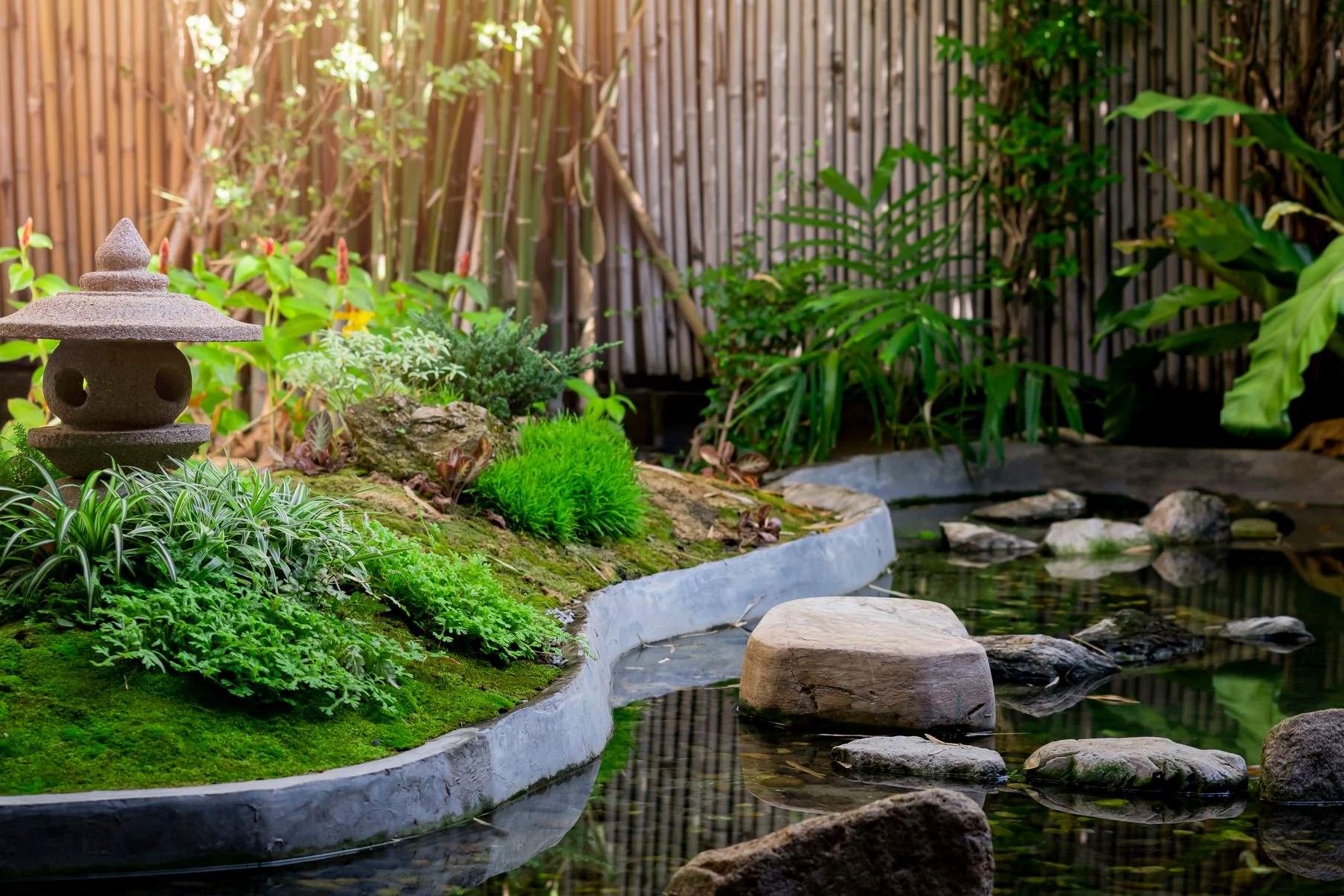

DIY Projects
How To Make A Zen Garden In Your Backyard
Modified: January 22, 2024
Learn how to create a serene Zen garden in your backyard with these easy DIY projects. Transform your space into a peaceful sanctuary.
(Many of the links in this article redirect to a specific reviewed product. Your purchase of these products through affiliate links helps to generate commission for Chicagolandgardening.com, at no extra cost. Learn more)
Table of Contents
Introduction
Welcome to the world of DIY projects, where you can bring your creative ideas to life and transform your backyard into a tranquil retreat. In this guide, we will explore the art of creating a Zen garden – a serene and peaceful space that promotes relaxation and mindfulness.
A Zen garden, also known as a Japanese rock garden or a dry landscape garden, is a minimalistic and contemplative space inspired by Zen Buddhism. It features carefully placed rocks, gravel, sand, and sometimes water elements, designed to evoke a sense of harmony, balance, and simplicity.
Creating a Zen garden in your backyard not only adds beauty to your outdoor space, but it also provides a sanctuary where you can unwind, meditate, or simply enjoy some quiet time. Whether you have a sprawling yard or a small balcony, a Zen garden can be customized to fit any space, making it a perfect DIY project.
In this article, we will guide you through the process of designing and constructing your very own Zen garden. From choosing the optimal location to selecting the right materials and incorporating key elements, we will provide you with the necessary knowledge and inspiration to embark on this fulfilling DIY journey.
So, put on your gardening gloves, grab your tools, and let’s get started on creating a peaceful haven that will enhance your connection with nature and bring a sense of serenity to your daily life.
Choosing the Right Location
The first step in creating your Zen garden is to carefully select the right location for it in your backyard. The ideal spot will have a peaceful and quiet atmosphere, away from any distractions or noise. Here are some key factors to consider when choosing the location:
- Sunlight: Zen gardens are often designed to be contemplative spaces, and natural sunlight can play a vital role in enhancing the ambiance. Look for an area that receives adequate sunlight throughout the day, but also has some shade to provide relief during hot summer months.
- Privacy: A Zen garden should offer a sense of tranquility and privacy. Choose a location that is shielded from neighboring houses or busy streets. You can use fences, hedges, or tall plants to create a private and secluded space.
- Accessibility: Consider how easily accessible the location is from your home. You will want to be able to enjoy your Zen garden regularly, so ensure that it’s within proximity to your house. It’s also a good idea to have a clear path leading to the garden for easy access.
- Views: Take into account the views and scenery surrounding the potential locations. You may want to position your Zen garden where you can enjoy pleasing views, such as a beautiful landscape, a flowering tree, or a serene pond.
- Noise level: Zen gardens are intended to be peaceful spaces, so it’s crucial to choose a location that is free from excessive noise. Avoid areas near busy roads, playgrounds, or other sources of disruptive sounds.
By carefully considering these factors and finding the right location for your Zen garden, you can create a serene and harmonious space that will help you find peace and balance in your daily life.
Selecting the Design Elements
In order to create a captivating Zen garden in your backyard, it’s important to carefully select the design elements that will contribute to the overall aesthetic and ambiance. Here are some key design elements to consider:
- Rocks: Rocks are a fundamental component of a Zen garden. They symbolize stability and strength. Choose rocks of different sizes, shapes, and colors to create visual interest. Arrange them in clusters or in a way that mimics natural formations, such as mountains or islands.
- Gravel or Sand: Another essential element of a Zen garden is the use of gravel or sand. This represents water or the flow of energy. Rake the gravel or sand into smooth and flowing patterns, such as concentric circles or straight lines, to create a sense of calmness.
- Plants and Greenery: While Zen gardens are typically sparse, adding a touch of greenery can enhance the sense of tranquility. Choose low-maintenance plants like moss, bamboo, or evergreens that blend well with the minimalist aesthetics of the garden.
- Water Features: Water elements, such as a small pond or a stone fountain, can add a soothing and meditative quality to a Zen garden. The sound of trickling water can help create a serene atmosphere while promoting relaxation and mindfulness.
- Bridges or Stepping Stones: Incorporating bridges or stepping stones can add a sense of movement and facilitate a mindful walking experience within the Zen garden. Choose natural materials, such as wood or stone, that blend harmoniously with the surrounding elements.
- Lighting: Consider adding subtle lighting to your Zen garden to enjoy its beauty even during the evening hours. Soft and warm lights placed strategically can create a magical and enchanting ambiance.
When selecting the design elements, it’s important to keep in mind the principles of simplicity, balance, and harmony. Each element should work together to create a cohesive and visually appealing space that promotes a sense of serenity and peace.
Preparing the Ground
Before you can start building your Zen garden, it’s important to prepare the ground properly. This involves clearing the area, leveling the surface, and creating a solid foundation for the design elements. Here’s a step-by-step guide on how to prepare the ground for your Zen garden:
- Clear the area: Begin by removing any existing vegetation, rocks, or debris from the chosen location. This will provide a clean canvas for your Zen garden.
- Mark the boundaries: Use stakes and string to mark the desired boundaries of your Zen garden. This will help you visualize the space and plan the placement of the design elements.
- Level the surface: Ensure that the ground is level by using a shovel or rake to remove any bumps or uneven areas. A level surface will create a more polished and aesthetically pleasing appearance for your Zen garden.
- Install a weed barrier: To prevent unwanted weed growth, lay down a weed barrier fabric over the cleared and leveled ground. This will help keep your Zen garden low maintenance and weed-free.
- Choose a base material: Select a base material, such as gravel or sand, to create the foundation for your Zen garden. This will provide a solid surface for the rocks, plants, and other design elements. Spread the base material evenly over the weed barrier, ensuring a consistent layer throughout.
- Compact the base material: Use a tamper or hand compactor to compact the base material firmly. This will create a stable surface and prevent shifting or settling over time.
By properly preparing the ground, you are setting the stage for a well-structured and enduring Zen garden. This will ensure that your design elements are showcased effectively and that your garden remains visually pleasing for years to come.
Installing the Zen Garden Features
After preparing the ground for your Zen garden, it’s time to start installing the key features that will bring serenity and balance to your space. This involves strategically placing rocks, arranging gravel or sand, and incorporating other design elements. Follow these steps to install the Zen garden features:
- Position the rocks: Begin by placing the rocks in your garden, taking into consideration their size, shape, and aesthetic appeal. Rocks symbolize stability and strength in a Zen garden. Arrange them in a way that creates visual interest and a natural flow. Experiment with different combinations and orientations until you achieve a pleasing arrangement.
- Create patterns with gravel or sand: Using a rake, create smooth and flowing patterns in the gravel or sand. Draw lines, shapes, or concentric circles to represent the flow of energy. This simple act can be meditative and helps to foster a sense of calm and tranquility.
- Incorporate water elements: If you’ve chosen to include water elements in your Zen garden, position them strategically. This can be a small pond, a stone fountain, or even a cascading waterfall. The sound of running water adds a soothing and meditative touch to the space.
- Add plants and greenery: Integrate low-maintenance plants and greenery into your Zen garden. Moss, bamboo, or evergreens can harmonize with the minimalist aesthetic and add a touch of natural beauty. Place them strategically around the rocks and water features to create a balanced and serene environment.
- Consider bridges or stepping stones: Install bridges or stepping stones if you want to create pathways or facilitate a mindful walking experience within your Zen garden. Bridges can be made of wood or stone, while stepping stones can complement the natural elements of your garden.
As you install the Zen garden features, remember to pay attention to the principles of simplicity, balance, and harmony. Each element should work together to create a cohesive and visually appealing space that promotes a sense of serenity and peace.
Adding Plants and Greenery
Integrating plants and greenery into your Zen garden is an essential step to create a harmonious and natural ambiance. Carefully selecting the right plants can enhance the beauty and tranquility of your space. Here are some tips for adding plants and greenery to your Zen garden:
- Choose low-maintenance plants: Opt for low-maintenance plants that require minimal care and attention. This will ensure that your Zen garden remains hassle-free and continues to flourish over time. Some popular choices include moss, bamboo, Japanese maples, and evergreen shrubs.
- Consider the size and scale: Take into account the size and scale of your Zen garden when selecting plants. Choose plants that will not overpower the space but rather complement the other elements. Consider using dwarf varieties or bonsai trees to maintain a sense of proportion.
- Create balance and contrast: Aim for a balanced composition by incorporating a variety of plant textures, shapes, and colors. Contrast softer foliage with spiky or textured plants to add visual interest. Create a sense of tranquility by using shades of green or choose specific plants to introduce pops of color.
- Maintain simplicity: Remember to keep the overall design of your Zen garden simple and uncluttered. Avoid overcrowding the space with too many plants or excessive ornamentation. Emphasize minimalism and allow each plant to stand out on its own.
- Consider the season: Keep in mind the seasonal changes and the longevity of the plants you choose. Select plants that can thrive in your climate and ensure that they will retain their appeal throughout the year, even in colder seasons.
As you add plants and greenery to your Zen garden, carefully position them around the rocks, gravel, and water elements. Take into account their growth patterns and allow them space to thrive. Regular maintenance, such as pruning and watering, will be required to maintain the beauty of your plants and keep your Zen garden looking vibrant and serene.
Incorporating Water Elements
Water elements play a significant role in creating a tranquil and meditative atmosphere in a Zen garden. They add a sense of serenity, movement, and harmony to the space. Here are some considerations for incorporating water elements into your Zen garden:
- Create a small pond: If you have the space, consider adding a small pond as a focal point in your Zen garden. A pond can serve as a reflective surface, providing a sense of calm and serenity. Place rocks around the pond and position it in a way that allows for optimal viewing and reflection.
- Add a stone fountain: A stone fountain is another popular water element for a Zen garden. It provides the soothing sound of flowing water, which can enhance relaxation and mindfulness. Ensure the size and style of the fountain aligns with the overall aesthetics of your garden.
- Consider a cascading waterfall: For a more dramatic effect, you may opt for a cascading waterfall. The sound of water cascading down rocks can create a mesmerizing and peaceful ambiance. An experienced landscaper can help design and install a waterfall feature that complements your Zen garden seamlessly.
- Maintain balance: When incorporating water elements, it’s important to maintain a sense of balance and proportion. Avoid overpowering the space with a large pond or overly elaborate water features. Remember that simplicity is key in a Zen garden, so opt for smaller or more subtle water elements that blend harmoniously with the surrounding elements.
- Consider the maintenance: Water elements may require regular maintenance to keep them clean and functional. Ensure that you are prepared to invest the necessary time and effort in cleaning, treating, and maintaining the water features to ensure their longevity and optimal performance.
Incorporating water elements into your Zen garden adds a dynamic and sensory element to the space. The sight and sound of water can help create a peaceful and serene atmosphere, enhancing the overall experience of tranquility and mindfulness.
Designing the Pathways
Pathways serve an important function in a Zen garden as they guide visitors through the space and encourage mindful walking. They also contribute to the overall aesthetics and flow of the garden. Here are some tips for designing pathways in your Zen garden:
- Choose the material: Select a material that aligns with the overall aesthetic of your Zen garden. Common options include stepping stones, gravel, or wooden planks. Consider their durability, ease of maintenance, and how well they blend with the other design elements.
- Create a natural flow: Design the pathways in a way that creates a natural flow and encourages a slow and deliberate pace. Avoid straight lines and opt for gentle curves or meandering paths to evoke a sense of exploration and discovery.
- Pay attention to scale: Ensure that the width and length of the pathways are appropriately scaled to the size of your garden. A too-narrow or too-wide path can disrupt the balance and harmony of the space. Aim for a width that comfortably allows one person to walk at a time.
- Add stepping stones or bridges: Introducing stepping stones or small bridges can add visual interest and create focal points along the pathways. They can also create opportunities for pause and reflection as you navigate through your Zen garden.
- Balance between open space and vegetation: Strike a balance between open spaces and vegetation along the pathways. Too much greenery can make the paths feel enclosed, while too little can make the space feel bare. Use plants strategically to complement and enhance the pathway design.
- Enhance with lighting: Consider adding subtle lighting along the pathways to illuminate your Zen garden during the evening hours. Soft and warm lights can create a magical and enchanting atmosphere. When positioning the lights, make sure they do not disrupt the natural flow and aesthetics of the pathways.
Designing the pathways in your Zen garden is an opportunity to create a contemplative and mindful journey. Pay attention to the materials, flow, and visual elements to ensure a seamless and harmonious experience while navigating through your tranquil oasis.
Adding Final Touches
As you near completion of your Zen garden, it’s time to add the final touches that will elevate its beauty and create a truly serene and peaceful atmosphere. These finishing details will help bring the entire garden together and provide a sense of completion. Here are some key final touches to consider:
- Decorative elements: Add subtle and minimalistic decorative elements to enhance the aesthetics of your Zen garden. Introduce small and meaningful sculptures, lanterns, or other ornaments that align with the Zen philosophy. These elements should complement the overall design without overpowering the space.
- Furniture or seating areas: Incorporate a seating area or outdoor furniture where you can relax and enjoy the serenity of your Zen garden. Select comfortable and durable seating options that harmonize with the overall design. Consider a cozy bench nestled amidst the greenery or a meditation cushion for quiet reflection.
- Wind chimes or bells: Hang wind chimes or small bells in strategic locations throughout your Zen garden. The gentle sounds they produce can create a peaceful and soothing atmosphere. Opt for high-quality wind chimes that produce a soft and melodic tone.
- Engage the senses: Consider other sensory elements to engage and stimulate the senses in your Zen garden. Plant fragrant flowers or herbs to create pleasant scents. Incorporate wind-resistant plants that generate gentle rustling sounds. Install a small water feature to add the sense of tranquility through sound and sight.
- Artistic elements: If you have a knack for art, incorporate your own creations into the design. Paintings, calligraphy, or other forms of artistic expression can be placed strategically or hung on nearby walls to add a personal touch and reflect your creative vision.
The final touches you add to your Zen garden should complement the overall theme and atmosphere you desire to create. Remember to keep the design simple, maintaining a sense of balance and harmony. These finishing details will add depth and character, transforming your garden into a truly serene and enchanting sanctuary.
Maintaining Your Zen Garden
Once you have designed and created your Zen garden, it’s essential to establish a regular maintenance routine to ensure its longevity and continued beauty. By taking care of your garden, you can preserve its tranquil ambiance and enjoy a serene retreat for years to come. Here are some maintenance tasks to consider:
- Weeding: Regularly inspect your Zen garden for any unwanted weeds or plant growth. Pull out any weeds as soon as you spot them to maintain the clean and minimalist aesthetic of the garden. Applying a layer of mulch or weed barrier can help minimize weed growth.
- Raking: Use a rake to maintain the patterns in the gravel or sand. Raking helps to create a sense of calmness and flow while ensuring that the design elements remain crisp and well-defined. Regular raking also helps to prevent the accumulation of debris.
- Trimming: Prune and trim the plants in your Zen garden to maintain their shape and prevent them from overshadowing other elements or encroaching on pathways. Regular trimming will keep the garden tidy and ensure that the plants remain healthy and vibrant.
- Watering: If your Zen garden includes plants or water features, it’s important to water them appropriately. Research the watering needs of the specific plants in your garden to ensure they receive the right amount of water. Monitor the water features to ensure functionality and cleanliness.
- Cleaning: Regularly remove any debris, fallen leaves, or branches from the garden. Keep the rocks and pathways free from dirt or any other accumulation that may disrupt the harmony of the garden. Consider using a soft brush or cloth to gently clean the rocks and ornaments.
- Seasonal care: Adjust your maintenance routine based on the seasons. In colder months, protect delicate plants from frost, and take measures to prevent water features from freezing. During warmer months, ensure adequate watering and provide shade for plants that require it.
Regular maintenance not only keeps your Zen garden visually appealing but also allows you to connect with the space and experience the calming benefits it offers. Embrace the tasks as opportunities for mindfulness, engaging in the care and nurturing of your garden to cultivate a sense of peace within yourself.
Conclusion
Congratulations on creating your very own Zen garden! By following the steps outlined in this guide, you have transformed your backyard into a tranquil retreat that promotes relaxation, mindfulness, and a deep connection with nature. From choosing the right location to selecting design elements, preparing the ground, and adding final touches, you have crafted a space that exudes serenity and balance.
Your Zen garden is not only a visually appealing outdoor space but also a sanctuary where you can find solace, unwind, and reflect. It offers a respite from the fast-paced world and provides an opportunity to connect with yourself and the present moment.
Remember to maintain your Zen garden regularly, tending to tasks such as weeding, raking, trimming, and cleaning. This ongoing care will ensure that your garden remains a haven of peace and beauty for years to come.
As you spend time in your Zen garden, take the opportunity to immerse yourself in the present moment. Engage your senses, listen to the sound of trickling water, breathe in the fragrant scents, and appreciate the beauty of the carefully arranged design elements. Allow yourself to experience the tranquility and inner peace that your Zen garden offers.
Lastly, be open to the idea of personalizing and evolving your Zen garden over time. As seasons change and your own preferences develop, you may choose to add new elements or adjust the design. Adapt your space to reflect your own journey and continue to foster a sense of serenity and balance in your life.
Enjoy the serenity of your Zen garden, and may it bring you peace, mindfulness, and a deep connection with nature for years to come.
